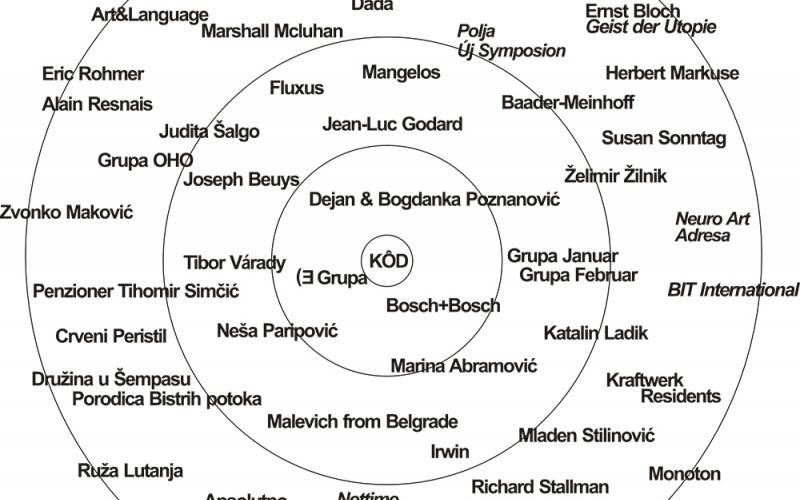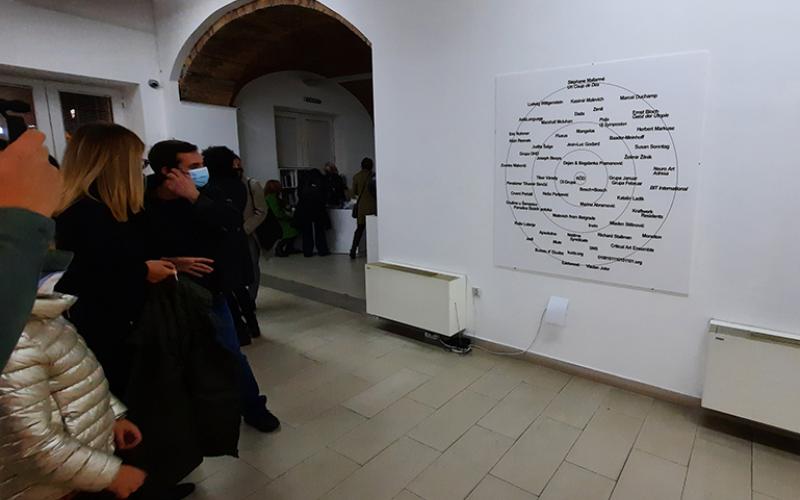KUDA.ORG AT THE 19th ART BIENNAL, Pančevo
19th ART BIENNAL, Pančevo
"Death to Art, Long Live Art!"
from 31 October to 27 November 2020.
Pančevo, Serbia
Rethinking the heritage of the second line in art in the former Yugoslavia
There are phenomena in art that have sprung up beyond the usual rules and norms of their time and certainly beyond all expectations. These phenomena were what in the end, long after their creation, turned out to be progress in art.
Although art history and theory have traditionally detected shifts until recently only in large centers of the art world (New York, Rome, Paris), it turned out that in our region (which was the territory of the former Yugoslavia) such phenomena also occurred, were equally spontaneous. They were in the spirit of similar progressive events in these great centers and equally contributed to the progress in understanding and creating art. Also, unfortunately, they were mostly ignored or condemned in their immediate environment.
Curatorial team: Selman Trtovac, Ivana Bašičević Antić, Sanja Latinović, Stevan Vuković
-
MEDIA ONTOLOGY by kuda.org
The mapping of the social and art history of Novi Sad
The Continuous Art Class - Radical practice, flexible art, dogmatic framework
The map Radical practice, flexible art, dogmatic framework is the result of the research conducted during the project „The Continuous Art Class“. The map presents the network of protagonists and references to art, social and political theory and practice which influenced the Novi Sad neo-avant garde in the sixties and seventies of the 20th Century. The map reveals the fields of the historical avant gardes from the beginning of the twentieth century, via the post-war neo-avant garde, all the way up to contemporary art production.
Insight is given by „The Continuous Art Class“ project into the context of the historically progressive and engaged art practices in Novi Sad and the complex social and political environment which significantly determined these practices is revealed, where it is the main economic and political turning points in the former Yugoslavia which are above all taken into consideration. With regard to the context, „The Continuous Art Class“ shows the relation of the so-called New art practices towards the cultural establishment and dominant discourse of soc-realism, towards the official cultural institutions (Tribina mladih and the student and literary magazines), towards models of self-organisation and networking between the cultural and intellectual scenes from Zagreb, Ljubljana, Belgrade, towards the discussion about art’s autonomy, and alternative forms of the organisation of social and political life.
The project „The Continuous Art Class“ takes a deviation from the usual romantic way of looking at the art practices of the second half of the 1960s and the beginning of the 1970s as being excessive, censored and impossible, breaking from the contemporary view of the heritage of Yugoslav socialism as exclusively negative as well as from the ethno-nationalistic positions which, in negating this heritage on a more general level, pave the way for the so-called „non-ideological“ influence of liberal democracy and the free market in post-Yugoslav society.
Changes in the Novi Sad cultural institutions after the political ferment of the beginning of the 1970s dispelled the idea of the „public institution“ as a relevant framework for the discussion of current social and political issues. Moreover, one might also conclude that after the abolition of the Tribina Mladih some kind of vacuum in the critical discourse about art and culture was created, at least if we speak about Novi Sad. The consequences of this are visible even today and are reflected in the continued absence of a public critique of the fascism of the 1990s, of right-wing extremism at the beginning of the 2000s and of the neo-liberal capitalism of today. The institutional practices of art and culture today are developing under the wings of the creative industries and in a peaceful coexistence with the current regime, so that they do not see their task in posing burning questions or a critique of the public as for example had been the case with the Tribina Mladih at the end of the 1960s. This project poses the questions: How can the customary practice of the protection and conservation of the cultural and intellectual heritage be transcended and become an active political agent of the current day? Can a specific way of dealing with the cultural heritage become a tool to analyse contemporary cultural creations?
Various formats are borne by the structure of this long-term project „The Continuous Art Class“, from the exhibitions, publications, DVD releases, catalogues and co-productions which detect the wide spectrum of influence and transmission of such practices in the contemporary moment. The Continuous Art Class is established as a endure state with the permanent intention to change the state.
Centar_kuda.org, Novi Sad


